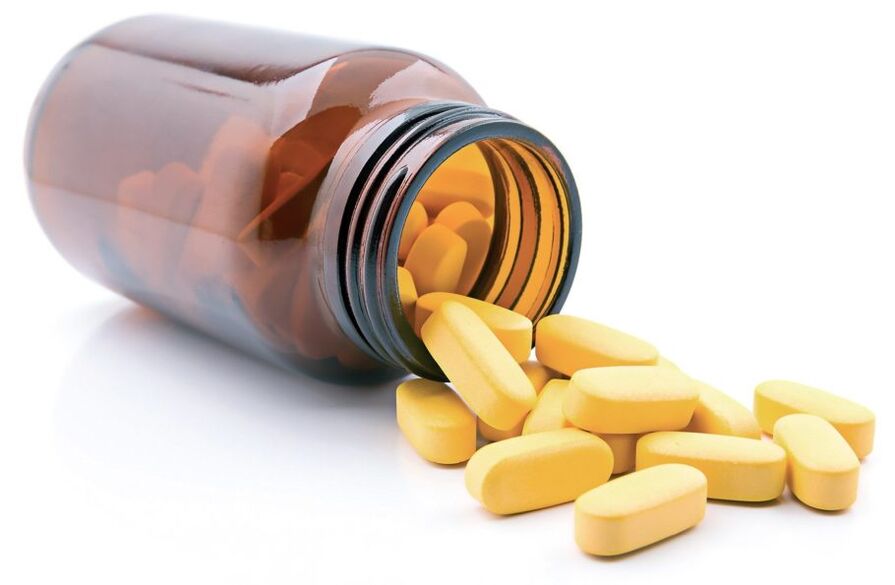One of the most dangerous "male" diseases is prostatitis - an acute inflammation of the prostate gland. The disease is accompanied by discomfort when urinating and can cause infertility. Different types of prostatitis develop at different rates and require a special method of therapy. The disease has a number of serious complications and requires timely diagnosis. This helps to identify the characteristics and type of the disease in time so that you can start treatment early in the disease.
Forms and symptoms of the disease
The disease can occur in both acute and chronic forms. The method of treatment is chosen depending on the symptoms of the course of the pathology. The signs of acute and chronic forms are different and have many characteristics. The acute form always precedes the chronic form, which can lead to more serious diseases such as adenoma and cancer.
Treatment of prostatitis at any stage of development has a favorable prognosis if no complications occur.
Acute prostatitis
Prostate tissues are exposed to pathogenic microorganisms. In addition, the acute form is caused by damage to the organ by the fungus. Due to the inflammatory process, the balance of the microflora is disturbed and immunity is reduced. As a result, the inflammation of the prostate worsens. Other causes of acute prostatitis include:
- Decreased or weakened immunity. Men with chronic diseases of the urogenital system and often prone to colds are more likely to have prostate problems than others.
- Operational intervention. Any surgical procedure can cause a variety of diseases.
- Pathology of internal organs. The presence of pathogenic microorganisms can provoke the development of prostatitis.
- Hormonal insufficiency and increased estrogen production. The risk group includes men aged 30-40.
- Caries. Untreated dental disease is one of the most common causes of prostate disease. Bad teeth provoke the spread of bacteria throughout the body and cause bacterial prostatitis.
Symptoms of acute prostatitis:
- severe pain in the muscles and lower back;
- delays and frequent urination;
- erectile dysfunction.

The acute phase requires immediate treatment. The patient is prescribed medication and physiotherapy.
Important! At the first sign of the disease, a medical examination should be performed immediately, and sometimes hospitalization may be required. The examination will establish the characteristics of the pathology and prescribe treatment. Self-medication can cause the acute form to become chronic and cause serious complications (abscess of nearby tissues and vascular thrombosis).
Chronic prostatitis
It is the most dangerous and severe form of the disease. It is characterized by a "Lanya" course: more often, the signs of prostatitis do not appear in any way. All types of chronic prostatitis occur due to disregard for symptoms and lack of timely treatment, and can sometimes occur without an acute form. Other possible causes of chronic prostatitis include:
- congestion in the internal organs;
- sedentary work, hypodynamics;
- weakened immunity;
- malnutrition;
- bad habits;
- injury;
- infectious diseases of the genitals;
- tension;
- hypothermia.
Lack of therapy can lead to adenoma. The disease is often asymptomatic, so men should undergo regular medical check-ups, especially after 30 years.

Consequences of chronic prostatitis:
- urogenital system and system dysfunction;
- burning pain in the groin;
- decreased libido, lack of erection;
- general malaise, weakness.
Chronic prostatitis is treated on an outpatient basis, but sometimes the patient is hospitalized. Therapy includes a complex of physiotherapy, antibiotics, and a therapeutic diet. As additional therapeutic measures, massage is prescribed, especially in neglected cases.
Classification
Infectious
It is an inflammation of the prostate caused by the pathogenic microflora. It can occur in both acute and chronic forms. It most commonly develops against the background of infectious and fungal diseases such as influenza, rubella, chickenpox, and herpes.

Factors influencing the development of bacterial prostatitis include smoking, alcohol consumption, impaired immunity, and SARS. This form is most common in patients between the ages of 20 and 40. Antibacterial and anti-inflammatory agents are used for treatment.
Bacterial
A rare type of prostatitis, the main cause of which is bacteria - E. coli, staphylococci, Trichomonas, chlamydia and Pseudomonas aeruginosa. It is diagnosed by testing blood, urine and secretions. The symptoms correspond to the acute form.
The disease is provoked by nervous system disorders, smoking, alcohol dependence, stress, depression. Sometimes infection can occur in the postoperative period.
Treatment includes antibiotics and non-steroidal anti-inflammatory drugs. Violation of the treatment regimen may lead to the transition of prostatitis to chronic form.
Mushroom
The cause of the pathology is the ingestion of fungi (aspergillus or candida) into the prostate tissue. Fungal infections can occur due to hormonal changes and long-term use of antibiotics and antibacterial drugs. It also occurs in the background of chronic diseases and decreased immunity. Treatment with folk methods and self-healing can lead to chronic form and serious complications.

It is sometimes asymptomatic, making it difficult to make a timely diagnosis. The latent form can cause the cancer cells to multiply. He was diagnosed with a biopsy. In case of fungal prostatitis, disorders of the urogenital system, urethritis, cystitis, groin and pelvic pain, fever.
stagnation
It is a chronic, non-infectious type. The causes are congestion of the circulatory system in the pelvic area or stagnation of prostate secretion. It may occur in a latent form or with mild symptoms. Signs may include mild nausea, fever, and urinary pain in the genitals, groin, or pelvis.
It sometimes manifests itself in the form of sexual dysfunction (decreased libido, insufficient erection, liquefaction or sperm retention). Medicines that stimulate blood circulation and hormonal drugs are used for the treatment. Physiotherapy exercises will also be effective.
Purulent
The purulent type is the most dangerous to the patient's health. It is characterized by urinary excretion and fever, which indicates the presence of infection.

Stages and subtypes:
- hurutos.This subtype of prostatitis is isolated as a separate infectious disease. The difference is the lack of purulent discharge. All inflammatory processes take place only in the secretory channels of the gland. The causes are complications of influenza, tonsillitis, and SARS. It manifests itself in the form of a common urge to urinate with mild aching pain. The prognosis is favorable. Complex treatment of concomitant diseases is usually prescribed.
- Follicular.The acute phase begins with inflammatory processes in the ducts of the gland and is the result of pathological manifestations of other organs. The symptoms are mild and often invisible to the patient. It can cause ear, nose and throat problems, respiratory system, urethra, etc. infection or inflammation. It manifests itself in the form of acute pain, a sharp rise in body temperature, and pus in the advanced state. With timely treatment, the prognosis is favorable. If treatment is not completed in time, it may enter the parenchymal stage.
- Parenchymal. This is one of the most difficult and dangerous sections. The purulent nature extends to all the lobes of the prostate gland. In this subtype of the disease, the outflow of prostate secretion is disrupted, pus and mucus become clogged. The chronic form is often protracted. The patient has functional disorders of the urogenital system, decreased erection and dissatisfied with orgasm. Gonococcal infection is mentioned as one of the most common causes of purulent prostatitis. The treatment has a long but positive effect. Self-medication can lead to life-threatening complications.
- Abscess formation. The section is the most dangerous and requires immediate treatment. Prostate tissue manifests as an abscess. It can cause kidney failure, infertility, cystitis and sepsis. Complications can lead to death.

One of the main ways of treatment is taking antibacterial drugs. In advanced cases, the patient undergoes surgery. Self-healing can lead to the patient's death.
calculating
It is a complex form that manifests itself in the long course of the disease. This is due to improper therapy or a complete lack of treatment. It is characterized by the formation of stony inclusions in the ducts of the gland. Endogenous stones can block the urethra, causing the patient to experience acute pain during sexual intercourse, walking, and urination.
This can lead to complications such as impotence and infertility. The treatment is done in a hospital, sometimes the patient undergoes surgery. Prolonged lack of treatment can cause prostate cancer, benign prostatic hyperplasia and adenoma.

Prevention
Preventive measures help prevent the development of pathology and reduce the likelihood of infection. The simplest preventive measures are:
- regular sexual intercourse;
- personal hygiene;
- quitting smoking and alcohol;
- comfortable to wear cotton underwear;
- maintaining immunity;
- proper nutrition;
- protection against hypothermia.

At home, you can prevent the development of pathology by performing simple physical exercises - bicycle, bridge, birch - daily.
Taking 10 minutes of physical activity every day can halve your risk of prostatitis.
Simple exercises also help to improve well-being:
- Stand up straight, emphasizing one leg. Perform large, wide swings back and forth with the other foot. It is recommended that you perform 100 swings with each foot.
- Decisions. Stand with your feet shoulder-width apart and tilt your body alternately to the right and left.
- During the day, try to hold your breath several times for 10-15 seconds. Repeat the breathing exercises at least 5 times a day.
Treating prostatitis is a long and complicated process that can cause a lot of trouble. In order to protect the body from the development of pathology, regular examinations and preventive measures should be taken.





























